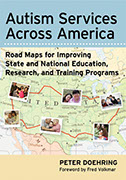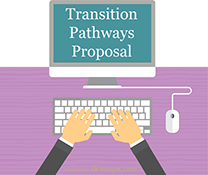Evolving conversations with donors & partners
Building consensus, shaping expectations, and generating excitement
January 19, 2017
 So you think a track record of successful research proposals has prepared you to approach a donor interested in funding services? Think again! Creating a proposal for a donor to help launch a new program of services is VERY different from responding to a Request for Proposals or RFP posted for a research grant competition. But it may also offer a different way to approach a donor and to tap into their interests and goals. This same process can help to build consensus across multiple partners. In this case, the donor's desire to demonstrate new ways of delivering services fundamentally shifted the focus and nature of the project. In the next chapter, I explore why it may be difficult for a traditional research setting to make the fundamental shift that a project like Transition Pathways requires, from generating knowledge not just through scholarship but by also exploring how services might be delivered with community-based partners.
So you think a track record of successful research proposals has prepared you to approach a donor interested in funding services? Think again! Creating a proposal for a donor to help launch a new program of services is VERY different from responding to a Request for Proposals or RFP posted for a research grant competition. But it may also offer a different way to approach a donor and to tap into their interests and goals. This same process can help to build consensus across multiple partners. In this case, the donor's desire to demonstrate new ways of delivering services fundamentally shifted the focus and nature of the project. In the next chapter, I explore why it may be difficult for a traditional research setting to make the fundamental shift that a project like Transition Pathways requires, from generating knowledge not just through scholarship but by also exploring how services might be delivered with community-based partners.
What are some of these differences? An RFP for a research grant often sets the specific project(s) of interest into the strategic plan of the funding agency. The project's scope, and many of its goals and parameters have already been determined and are not negotiable. The only opportunity to use feedback to improve the proposal may be to re-submit a modified proposal the next time the competition re-opens, often a year later.
In contrast, proposals funded via philanthropy might evolve very differently, especially if the donor has already supported this institution or this researcher. For example, the scope, goals, and parameters of the proposal may develop through a series of conversations over several meetings with a donor or their representative, and partner agencies who may be involved in implementing the final project. There may also be more flexibility about the date of submission and the amount requested. It is easy to overlook the time and effort required to support this evolving conversation, before any actual funding is secured. And this is especially true when the project depends on creating a coalition of researchers and practitioners that brings community agencies and universities together. Program developers who have a track record of success with a donor are even better placed to begin this conversation.
How did all this work for the Transition Pathways Proposal? In this case, the donor had already provided a generous gift to launch the Life Course Outcomes research initiative. Less than 2 years later, the donor expressed a wish to now see how the Life Course Outcomes research initiative might help to shape new programs of services targeting transition age youth with ASD. This led to the negotiation of a separately funded feasibility study that led to my recruitment and that was formally awarded just prior to my arrival. The Transition Pathways Proposal submitted in December 2015 was the product of that feasibility study.
The conversations with donors referenced here occurred during the development of the Transition Pathways Proposal. The feasibility study period allowed us to explore a range of possible program models, and we were able to get feedback on detailed drafts of the project scope, goals, and parameters before submitting the final proposal. This period helped to clarify the donor's wish that the final project focus exclusively on services, with no research component.
These conversations with donors, and especially with partners, can be guided by the principles of collective impact discussed earlier. This process demands that the developer of the proposal be creative, flexible, and responsive to all parties. Establishing a common agenda early on can help each conversation build on the previous one, while continuous communication can refine expectations about the scope and parameters of the evolving proposal. Discussions of shared measurement and mutually reinforcing activities will be more important for potential partner agencies. In this context, the person or agency expecting to submit the proposal naturally provides the backbone linking these evolving conversations with a donor and with partners.
This evolving dialogue resulted in parallel conversations with potential partner agencies, which proved extremely useful in defining shared goals, opportunities, and responsibilities. Engaging partners like schools, vocational providers, and employers in the development of a proposal like this one was especially important, because we needed each partner agency to make commitments about resources and accommodations. It also allowed me to propose much more specific time-lines and goals for rapid growth and phased expansion, and to be more ambitious in proposals to braid our funding and resources.
Related Content
On this site
My Presentations and Publications
 (2013). Autism Services Across America: Roadmaps for Improving State and National Education, Research, and Training Programs. Paul H. Brookes Publishing Co., Baltimore, MD
(2013). Autism Services Across America: Roadmaps for Improving State and National Education, Research, and Training Programs. Paul H. Brookes Publishing Co., Baltimore, MD
Guideposts
![]() Straight Lines Barriers to accessing services are well-established: include under-served groups from the start when testing a new service
Straight Lines Barriers to accessing services are well-established: include under-served groups from the start when testing a new service
![]() Simple Steps To pitch the investment required to launch a new program, report per-student costs for each phase of planning and support
Simple Steps To pitch the investment required to launch a new program, report per-student costs for each phase of planning and support
![]() Other Lessons Philanthropists can play a unique and essential role by funding incubators and accelerators of new programs of services
Other Lessons Philanthropists can play a unique and essential role by funding incubators and accelerators of new programs of services
![]() Other Lessons Turning research into com-munity practice requires collaboration across researchers, practitioners, and agencies
Other Lessons Turning research into com-munity practice requires collaboration across researchers, practitioners, and agencies
![]() Other Lessons Weave funding, staffing, and training across partner agencies to control costs, ensure sustainability, and build your coalition
Other Lessons Weave funding, staffing, and training across partner agencies to control costs, ensure sustainability, and build your coalition
![]() Other Lessons There is no natural pipeline of leaders trained and experienced in undertaking comprehensive program development
Other Lessons There is no natural pipeline of leaders trained and experienced in undertaking comprehensive program development
X









